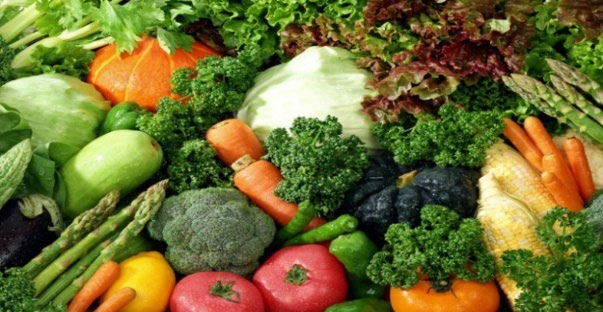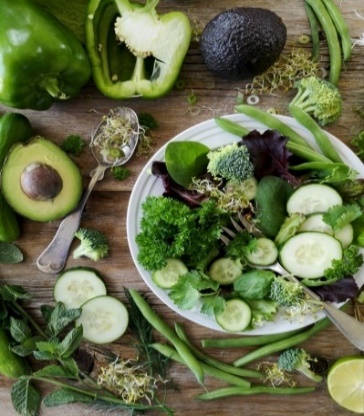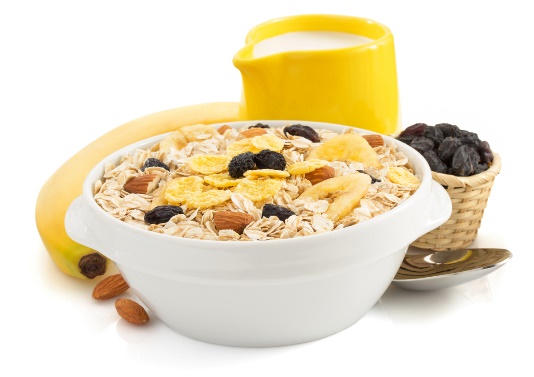March edition
- Let's Make Every Bite Count
- Green Spring Fruits and Vegetables!
- St. Patrick’s Day – go for the GOLD!
- Greek Yogurt Oatmeal
About the Newsletter
Monthly newsletter covering: Dietary Guidelines for Americans, My Plate, making every bite count, Spring fruits and vegetables; and a hearty and nutritious oat breakfast that is a good combination of fiber, protein and dairy.
Let’s Make Every Bite Count
By Aurora M. Buffington, Ph.D., Registered Dietitian

A bunch of various vegetables
As I’ve gotten older, I have placed a greater value on the contribution that lifestyle makes to health because I want to live a happy, long and comfortable life. I enjoy moving my body in ways that it lets me, and I love everything about food.Knowing this, you can imagine how sad it makes me to think that my calorie needs will decrease as I age, yet it is befuddling that my nutrient needs will become greater. How can I possibly get more nutrients in less food? I will need to
be intentional about choosing nutrient-dense foods and beverages, meaning those packed with beneficial nutrients relative to their content of calories and have less nutrients that are harmful in excess, such as saturated fat and cholesterol. As I get older, I need to ensure I consume foods and beverages containing nutrients of concern. While we all need more of the nutrients that most US Americans do not get enough regardless of age, including calcium, vitamin D, potassium, and dietary fiber, as we get older, the need for other nutrients such as protein, vitamin B12, and fluids becomes more significant too.
- Protein: getting enough will help reduce the loss of muscle mass that comes with aging. Imagine pairing that with muscle-strengthening exercises – now we are talking about a dynamic duo to help preserve our precious muscle mass!
- Vitamin B12: the leading cause for its deficiency is age because it can be hard to absorb due to medications or gastrointestinal issues. Consuming enough animal protein (beef, liver, chicken, and seafood) may help and so may dairy foods such as low-fat milk, yogurt and cheese, eggs, and fortified cereals.
- Fluids: a concern because with age, trips to the bathroom become more frequent and inconvenient. Plus, the thirst mechanism gets weaker, so elders may not drink enough fluids to remain adequately hydrated. Keep that flow of water circulating in the body with enough fluids to make urine the color of pale lemonade. Besides water, fluid intake can come from foods with high water content, such as soups and broths, fresh fruits and vegetables, and nutritious beverages such a slow-fat milk or 100% juice.
As you can see, it is vital to make every bite count, especially as we get older. You can do it with these four guidelines:
- Follow a healthy dietary pattern such as MyPlate.
- Honor your preferences, traditions, and budget - and medical conditions!
- Focus on nutrient-dense foods and beverages.
- Limit alcohol and foods high in sodium, added sugars, and fats.
You can learn more with the newly released Dietary Guidelines for Americans. If you have a chronic condition better managed with dietary modifications, consult with a registered dietitian to come up with a tailored meal plan that follows these guidelines.
Aurora Buffington is an assistant professor and public health nutrition specialist at University of Nevada, Reno Extension, a unit of the University’s College of Agriculture, Biotechnology & Natural Resources.
Green Spring Fruits and Vegetables!

A bowl of salad with various green fruits and vegetables
- Asparagus
- Avocados
- Broccoli
- Cabbage
- Celery
- Collard Greens
- Green Apples
- Green Onions
- Kale
- Kiwifruit
- Lettuce
- Limes
- Peas
- Spinach
What’s on your plate?
Explore different fruits and vegetables throughout the year. Remember, fresh, frozen, canned, and dried: it all counts toward your MyPlate goals!
MyPlate | U.S. Department of Agriculture
Seasonal Produce Guide | SNAP-Ed (usda.gov)
St. Patrick’s Day – go for the GOLD!

A pot of gold
Bingocize®
Join the Healthy Aging team for interactive and entertaining free games of Bingocize®. You are a click away from receiving fun giveaways, engaging weekly with others and adding more movement into your day. All you need is a laptop, smart phone or tablet to join. For more information or to sign up today, contact Dakota Clarke at healthyaginginfo@unr.edu, or call 702-948-5916.
Exercise During COVID-19
With the COVID-19 pandemic (global outbreak), it is important to maintain a safe distance and other precautions when exercising. However, it is important to continue to exercise and be physically active. Use these tips to stay active while following the safety guidelines to protect yourself and others during the COVID-19 pandemic.
Learn more at www.coronavirus.gov.
Greek Yogurt Oatmeal

A bowl of oatmeal with fruit and nuts
Oats were a staple food of the Irish throughout history. For a hearty and nutritious oat breakfast try this recipe; it makes every bite count and is a good combination of fiber, protein and dairy.
Ingredients:
•½ cup old fashioned oats
•½ banana, sliced (optional)
•pinch of sea salt
•1 ¼ cups water, milk, or a blend of both
•½ teaspoon cinnamon
•½ teaspoon vanilla (optional)
•¼ cup Greek yogurt + more if you’d like
GREEK YOGURT RECIPES FOR EVERY MEAL OF THE DAY | WELL+GOOD (WELLANDGOOD.)
Directions:
- Add oats, banana slices and sea salt to a pot. Add water/milk and stir to combine. Add cinnamon and vanilla, if using.Heat over medium-high heat for 8-10 minutes or until all the liquid has been absorbed. Be sure to stir the oats several times while cooking to make sure the banana slices melt into the oats. The oatmeal is done when all the liquid is absorbed,and the oats are thick and fluffy.
- Remove the oat mixture from the heat and stir in Greek yogurt. Start with ¼ cup and add more if you would like. Transfer the oat mixture to a bowl and top with your favorite oatmeal toppings. Use banana slices, blueberries, granola, or peanut butter as suggested toppings.
- Instead of using the banana for adding sweetness, you could add other natural sweeteners.
Some options: maple syrup, honey, coconut sugar or even stevia.
Published by:
A. Buffington, A. Lindsay, N. Mazzullo, 2021, Healthy LIVING While Aging! (2021-03), Extension | University of Nevada, Reno, Newsletter, Volume 2, Issue 3
An EEO/AA Institution. Copyright ©
2025, University of Nevada Cooperative Extension.
A partnership of Nevada counties; University of Nevada, Reno; and the U.S. Department of Agriculture


